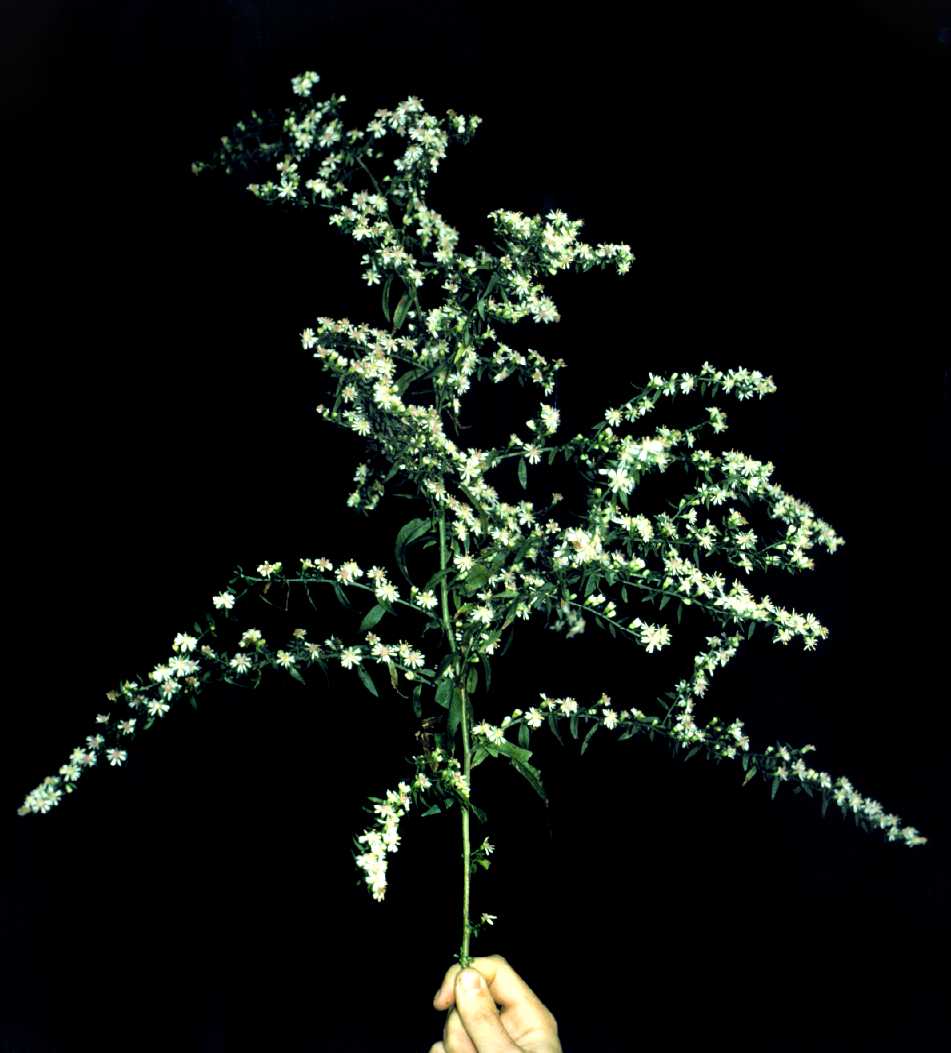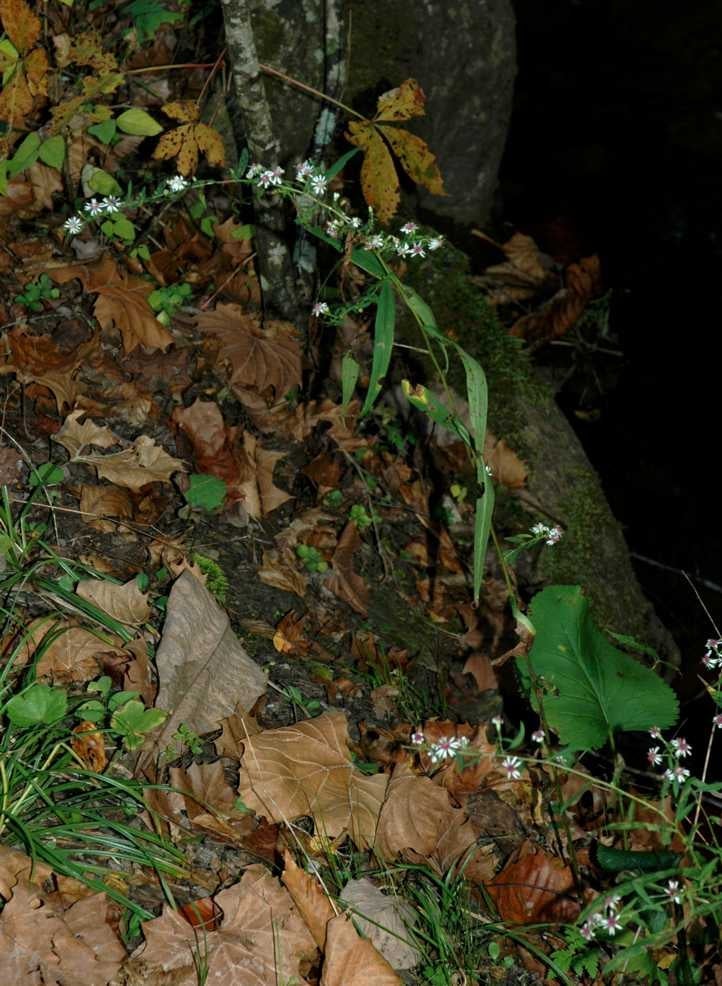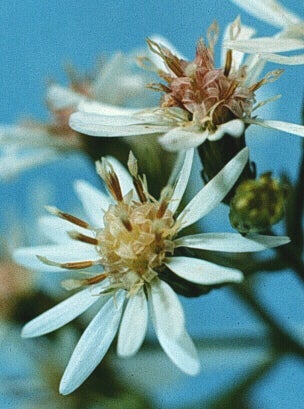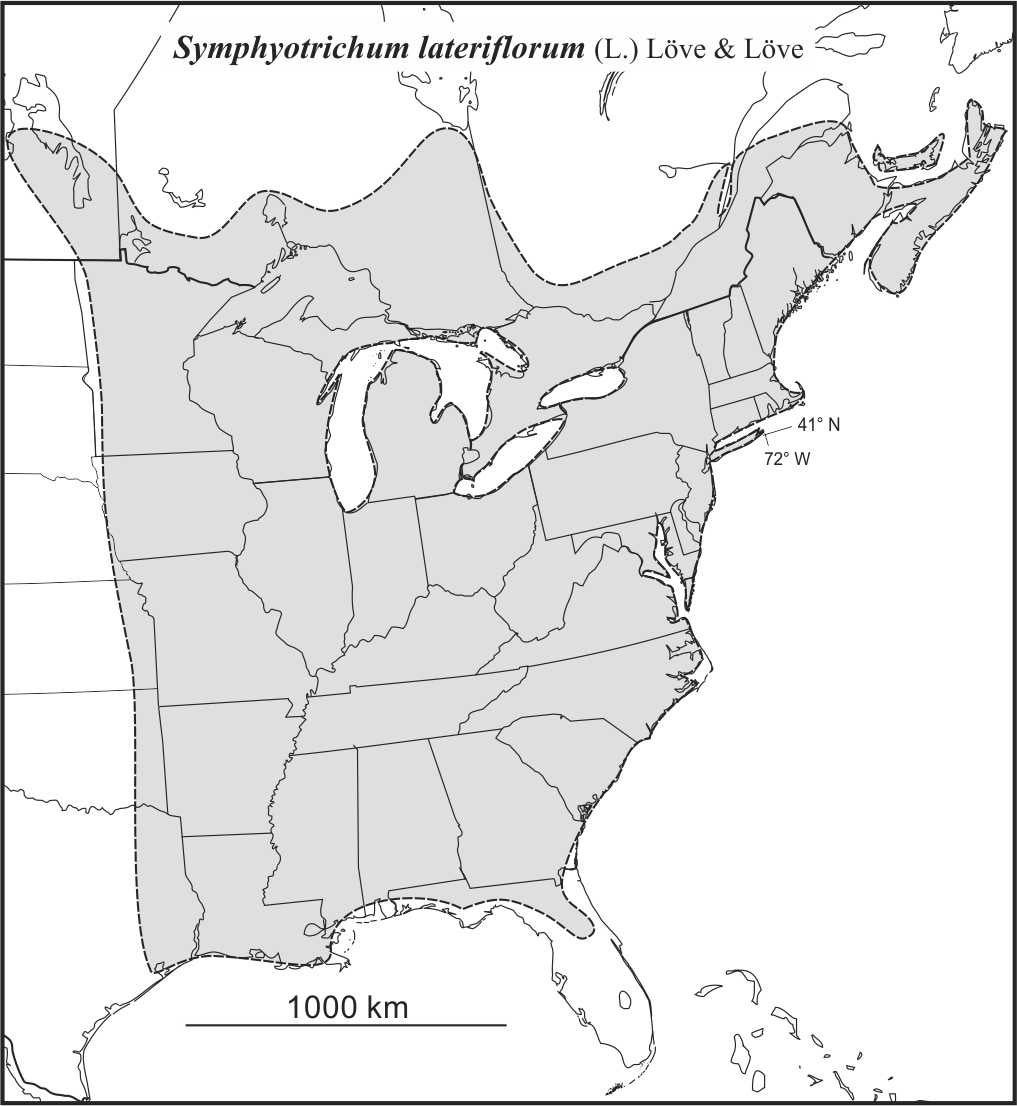Calico Aster or One-sided A. or White Woodland A. or Starved A., aster latériflore
Symphyotrichum lateriflorum (L.) Löve & Löve is native Relatively shaded habitats, dry to humid soils, usually deciduous woodlands (beech–maple, oak–hickory, mixed hardwoods), sometimes conifer woods, sometimes swamp forests (conifer or dediduous), edges of woods, meadows, usually rocky or sandy stream and pond shores, roadsides in eastern North America from Nova Scotia to eastern Manitoba south to northern Florida and eastern Texas (Brouillet et al. 2006; FNA). The common name Calico Aster is derived from the appearance of flowering branches with older heads with purplish-red disc florets mixed in with younger heads with whitish disc florets. Symphyotrichum lateriflorum is distinguished by having corolla lobes that are ½ to ¾ the length of the upper enlarged portion of the disc corolla; these are white initially and become pink to deep pink at time of pollination, i.e. when pollen has been presented and the stigmas are receptive.
The species was first described as Solidago lateriflora L. and treated in floras as A. miser L. and A. diffusus Ait. until Aster lateriflorus (L.) Britt. was published in 1889. Semple (2024) proposed a revised lectotypification of Solidago lateriflora in order to keep the name available for use in Symphyotrichum.
Semple et al. (2024) published a summary and map of the cytogeography of Symphyotrichum lateriflorum. The species includes diploids (2n=16), tetraploids (2n=32), hexaploids (2n=48), and octoploids (2n=64).
Multiple varieties have been proposed, but a comprehensive study of all of these is needed to determine which should be recognized in Sy. lateriflorum and which belong in synonymy: Sy. lateriflorum var. lateriflorum, Sy. lateriflorum (L.) Löve & Löve var. angustifolium(Wieg.) Nesom, Sy. lateriflorum (L.) Löve & Löve var. hirsuticaule (Lindl.) Nesom, Sy. lateriflorum (L.) Löve & Löve var. spatelliforme (Burgess in Small) Nesom plus Aster lateriflorum var. flagellaris Shinners and A. lateriflorus var. indutus Shinners.
Last revised 14 May 2025 by J.C. Semple
© 2025 J.C. Semple, including all photographs unless otherwise indicated
1-4. Symphyotrichum lateriflorum. 1. Inflorescence, Semple et al. 3087, Chautauqua Co., New York. 2. Shoot, Powell Co., Kentucky. 3. Two Heads pre-pollination (whitish disc florets) and at time of or post pollination (pink). 4. Range based on Semple et al. 2024.
Brouillet, L., J.C. Semple, G.A. Allen, K. Chambers and S. Sundberg. 2006. Symphyotrichum Nees. pp. 465-539. In Flora North America Editorial Committee, eds. Flora of North America. Vol. 20. Asteraceae, Part 2. Astereae and Senecioneae. Oxford University Press, New York.
Semple, J.C. 2024. On the lectotypification of Solidago lateriflora L., the basionym of Symphyotrichum lateriflorum (L.) Löve and Löve. Phytoneuron 2024-65. 1-3.
Semple, J.C., J.G. Chmielewski, A. Bouchard, and L. Brouillet. 2024. The cytogeography Symphyotrichum lateriflorum, S. ontarionis, S. racemosum, and S. tradescantii (Asteraceae: Astereae). Phytoneuron 2024-68: 1–20.







